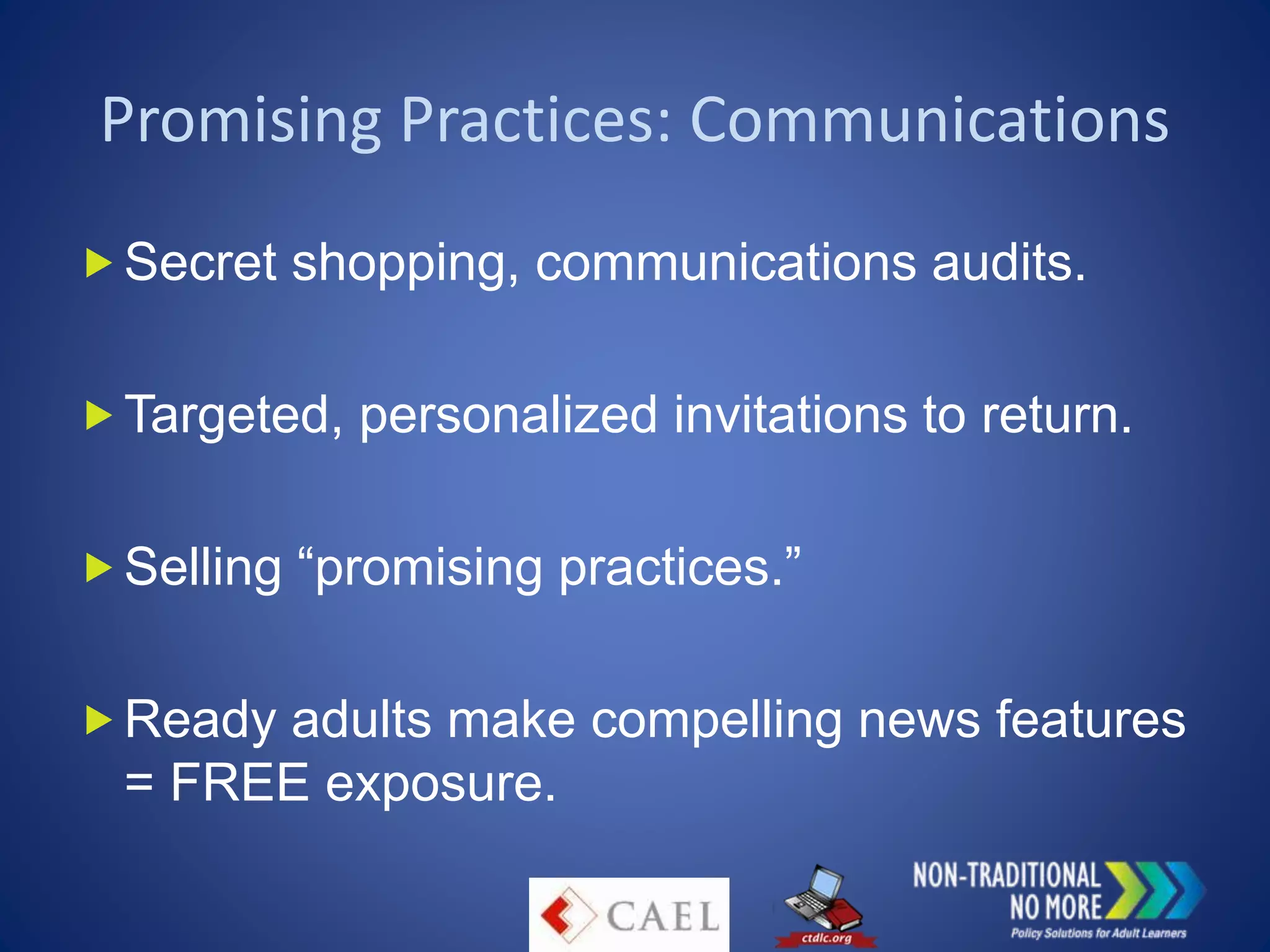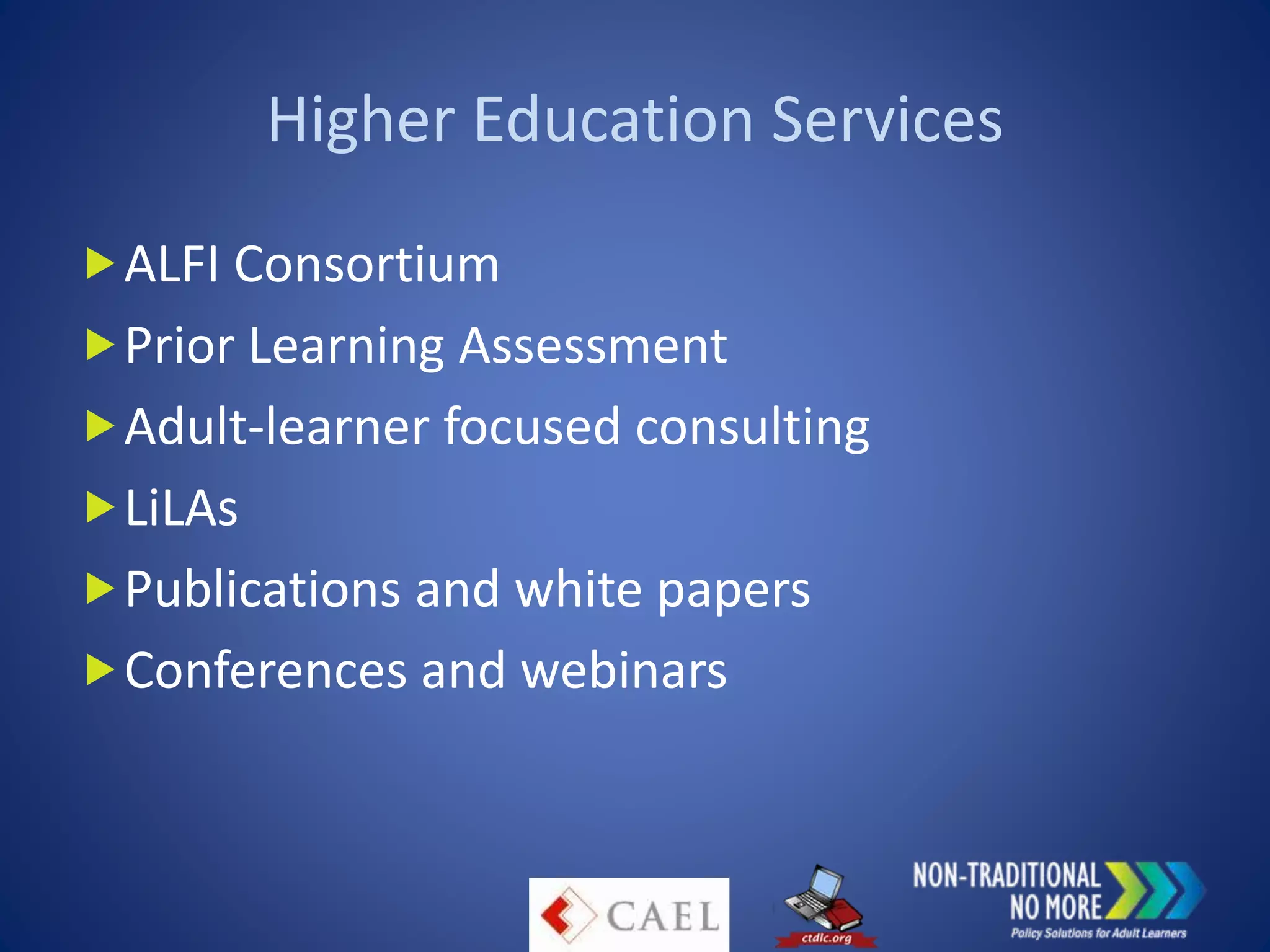This document summarizes a presentation on models for adult student success. It discusses barriers adult students face such as financial issues, work obligations, and lack of support systems. It also presents promising practices identified by the Non-Traditional No More project, such as prior learning assessment, flexible course scheduling, and targeted advising. The Connecticut Distance Learning Consortium's collaborative tutoring model and CAEL's Learning Counts prior learning assessment center are also summarized as examples of programs supporting adult students.















































